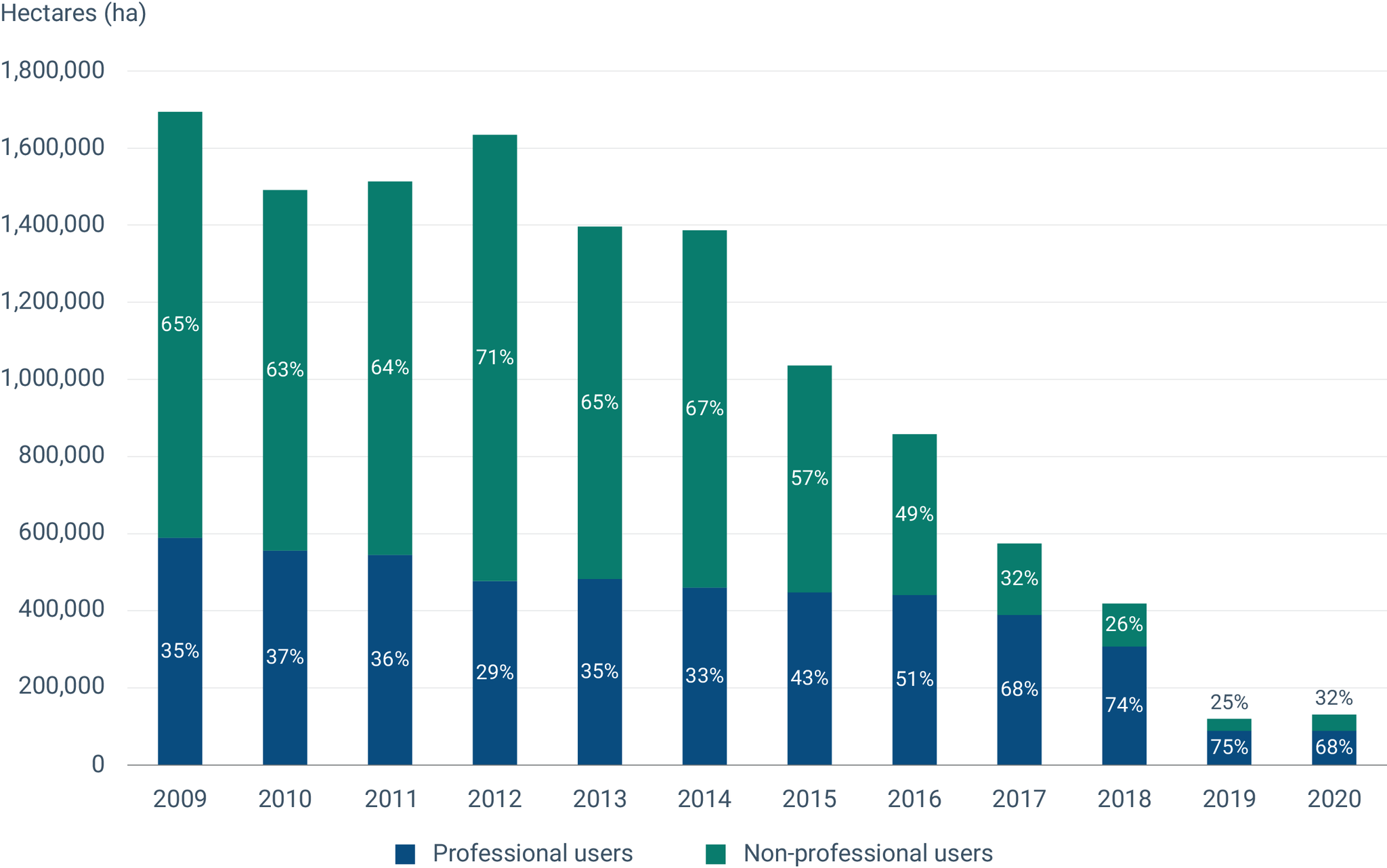Context
The main pesticides used in cemeteries are herbicides and moss killers. As the ground in cemeteries is partly sealed due to the presence of graves and alleys, rainwater runoff can contaminate nearby surface waters. Since cemeteries are public areas, pesticide application represents a potential source of exposure for bystanders in addition to occupational exposure for cemetery workers.
Measures
In France, the ban on pesticide use in cemeteries falls under Law No. 2014-110 (the so-called ‘Labbé law’). Adopted in 2014, the law introduced a broader ban on pesticide use in public areas such as parks, public gardens and roadsides.
The ban on pesticide use in cemeteries in the Labbé law was a national-level objective that all municipalities had to implement locally, first on a voluntary basis and thereafter as a binding obligation. Towns and villages benefited from a transition period to apply this regulatory change.
In the first round, municipalities were invited to implement a ‘zero pesticides’ policy in public places, including cemeteries. They could also apply for a national label called Terre Saine – Communes Sans Pesticides recognising best practices (Ministère de la Transition Écologique et de la Cohésion des territoires, 2023), with 728 municipalities receiving the label in 2021. This transitional period made it possible to test solutions, build a network of municipalities taking initiatives and ensure that citizens understood and supported the changes. For example, horticulturists were able to offer suitable solutions such as flower strips, which simply need to be unrolled — avoiding eliminating weeds by redesigning cemeteries to look more ‘natural’ instead. In some regions such as Normandy, municipalities organised a network of cemeteries to present results to other municipalities. The second round kicked off in 2021 when the ban came into effect.
A range of practices was implemented by French municipalities to eliminate pesticide application in cemeteries, requiring experimentation and training. The first and easiest was managing weeds using weed burners. Over time, burner use was replaced by plant species deployment and the introduction of street furniture. Common areas such as walkways were redesigned and some were covered with grass or mulch. Perhaps the most visible change was unrolling flowerbeds between the graves. The need to find new design solutions led some municipalities to rethink cemeteries as fully fledged parks and reintroduce trees, shrubs and plants with aesthetic and/or botanical value along the walkways, increasing biodiversity in these spaces.
Evidence of impact
The Labbé law has played an important role in reducing the non-agricultural use of pesticides, which fell by 92% between 2009 and 2020 according to the French Ministry of Agriculture and Food (see Figure 1).
Re-vamping cemeteries as public spaces has been a success and these areas have become more welcoming to the public. Cultivated plants have increased their aesthetic appeal, as well as their biodiversity, in French cities.
The pesticide ban was so successful that in 2022, France extended the ban to cover additional spaces. This includes, but is not limited to, private residential properties, hotels, amusement parks, and public spaces in commercial areas (Direction de l’information légale et administrative (Premier ministre), 2022).

Note: The chart shows the use of plant protection products by professional and non-professional users in non-agricultural areas, such as gardens, green spaces and infrastructures. More precisely, it shows the evolution of an indicator known as non-agricultural NODU (‘nombre de doses unités’), which corresponds to the non-agricultural surface area that would be treated annually with the plant protection products sold during the course of a year, at the maximum authorised doses.
Source: Ministère de l’Agriculture et de la Souveraineté alimentaire - DGAL (2022).
Explore different chart formats and data here
Lessons learned
- In a short period, it was possible to free public spaces from pesticide use.
- The change received public support and did not entail a financial cost for cities and villages.
- Staff working at cemeteries were trained to develop alternative management practices to maintain cemeteries in good conditions.
- Introducing new plant species makes cemeteries both a reservoir for biodiversity and a public space for rest and relaxation.
| Location | France |
|---|
| Timeframe |
2014-2023 (ongoing) |
| Scale of measure |
National: The ban on pesticide use in cemeteries is a national-level objective that all municipalities had to implement locally, first on a voluntary basis and thereafter as an obligation. |
| Pesticide(s) targeted |
The main pesticides used in cemeteries were herbicides and moss killers. |
| Measure led by |
Measures implemented at the municipal level, based on a national law adopted by the National Assembly and Senate of France. |

Document Actions
Share with others